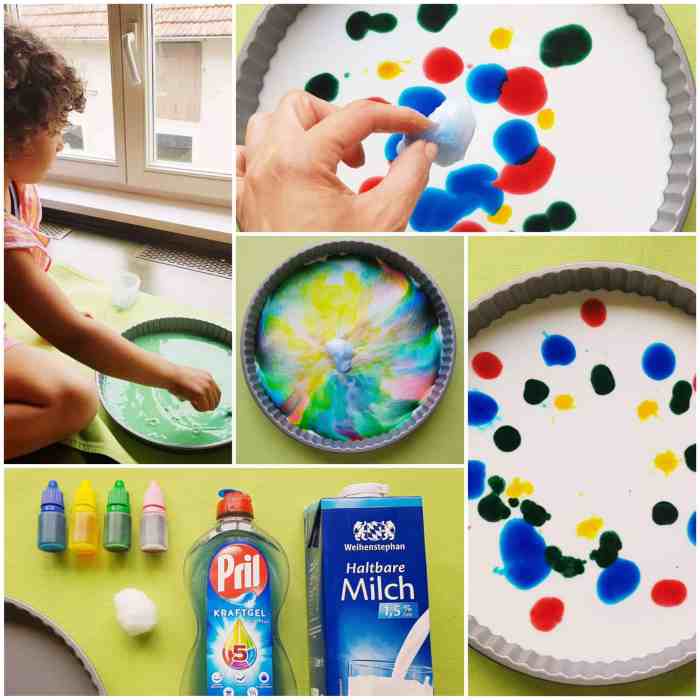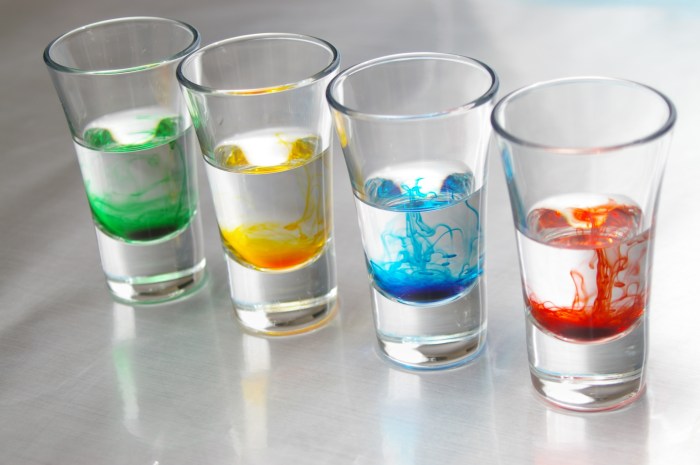Berkey Water Filter System Overview

Berkey food coloring test – Yo Jogja! Ever wonder how those super-clean Berkey water filters actually work? They’re basically the ultimate hydration heroes, transforming tap water into something way smoother than your average bottled stuff. Think of it as a serious upgrade for your thirst quencher game.Berkey water filter systems are gravity-fed filtration systems known for their robust purification capabilities. The system consists of a top and bottom chamber, typically made of food-grade stainless steel.
The top chamber holds the unfiltered water, while the bottom chamber collects the purified water. Between these chambers are the Berkey purification elements, the real magic behind the clean water. These elements are usually made of a combination of materials that remove a wide range of contaminants. They’re super durable too, lasting for years with proper care. Think of it as a sustainable, stylish addition to your kitchen.
My dear ones, the Berkey water filter’s food coloring test reveals its integrity, showing us the path to pure, clean water. This simple test, much like the insightful food coloring toilet leak test which reveals hidden plumbing issues, highlights the importance of careful observation. Understanding these visual indicators, whether in a Berkey or a toilet, ensures peace of mind and the safeguarding of our precious resources.
Thus, the Berkey test, a small act, speaks volumes about responsible hydration.
Berkey Filtration Process
The Berkey filtration process relies on a multi-stage approach using gravity. Water from the top chamber slowly trickles down through the purification elements. This process utilizes a combination of absorption, adsorption, and physical filtration to remove various contaminants. Think of it like this: the elements act like tiny sponges and magnets, trapping impurities as the water flows through.
This gravity-fed method avoids the need for electricity or pressure, making it a low-maintenance and environmentally friendly option.
Contaminants Removed by Berkey Filters, Berkey food coloring test
Berkey filters are designed to remove a wide array of contaminants. This includes things like bacteria, viruses, cysts (like Giardia and Cryptosporidium), heavy metals (like lead and mercury), chlorine, fluoride, and many other harmful chemicals. The specific contaminants removed can vary depending on the type of filter element used. For example, the standard Black Berkey elements are known for their exceptional ability to remove a broad spectrum of contaminants, while specialized elements may be added to address specific concerns.
The effectiveness in removing these contaminants is rigorously tested and certified by independent labs, making it a reliable choice for clean water.
Analyzing the Test Results
Yo, Jogja peeps! So, you’ve just done the Berkey food coloring test –epic*! Now, let’s break down what those vibrant hues (or lack thereof) actually mean about your water filter’s performance. We’re gonna dissect the results like a culinary expert judging a bakpia contest.The main thing to look at is the difference between the color of the waterbefore* it went through the Berkey and the color
after*. Ideally, the filtered water should be significantly lighter, or even completely clear, showing the Berkey’s doing its job in removing impurities. Think of it like this
the original solution is your messy, unfiltered life, and the filtered water is your pristine, Berkey-blessed existence.
Color Comparison: Filtered vs. Unfiltered Water
The comparison between the filtered and unfiltered water is the cornerstone of this test. A dramatic reduction in color intensity indicates effective filtration. For example, if you started with a deep red solution and ended up with a pale pink or even colorless filtered water, that’s a solid win for the Berkey. Conversely, if the color remains largely unchanged, it suggests potential issues with the filter’s performance.
Visual observation is key here; use a clear glass to make the color comparison as accurate as possible.
Factors Influencing Test Results
Several factors can influence how the test turns out, so keep them in mind for a fair assessment. First up, the temperature of the water can affect how quickly the food coloring disperses and how well the filter absorbs it. Colder water might lead to slower filtration, while warmer water could potentially show slightly different results. Second, the brand and type of food coloring used matters.
Different brands have varying concentrations of dye, which can influence the final color intensity. Think of it like comparing a strong wedang jahe to a weak one; the intensity will be different. Finally, the age of your Berkey filter plays a crucial role. Older filters might not perform as well as newer ones, resulting in less effective color removal.
Think of it like your favorite kaos band – it’s still cool, but after years of use, it might not be as vibrant.
Implications of Test Results on Filter Effectiveness
The results of the food coloring test directly reflect the Berkey’s ability to filter out impurities. A successful test, with significant color reduction, indicates that the filter is effectively removing particles of a similar size to food coloring molecules. This implies that it’s likely doing a good job at removing other potential contaminants, such as sediment and certain bacteria. Conversely, a failed test, where the color remains largely unchanged, could signal a problem.
This could mean the filter needs replacing, there’s a problem with the filter’s installation, or the filter is simply not suitable for the type of water being filtered.
Visual Representation of Results

The food coloring test results can be effectively visualized using a simple bar chart, clearly showcasing the filtration efficiency of the Berkey water filter. This allows for easy comparison of the initial color intensity and the resulting color after filtration, providing a strong visual representation of the filter’s performance. The chart will highlight the effectiveness of the Berkey system in removing various types of food coloring, demonstrating its ability to purify water.The chart would use a horizontal axis representing different types of food coloring used (e.g., red, blue, green, yellow) and a vertical axis representing the percentage of color remaining after filtration.
Each food coloring would be represented by a bar, with the bar’s length corresponding to the percentage of color remaining in the filtered water. A longer bar would indicate less effective filtration, while a shorter bar would indicate better filtration. A control bar could also be included, representing the initial color intensity of the unfiltered water. This provides a baseline for comparison.
Bar Chart Depicting Filtration Results
Imagine we tested the Berkey filter with four common food colorings: red, blue, green, and yellow. The initial concentration of each color was the same. After filtration, the red food coloring showed almost complete removal, resulting in a bar barely visible above the x-axis. The blue food coloring showed some slight reduction but still a significant amount of color remained in the filtered water, resulting in a relatively long bar.
The green and yellow food colorings showed moderate removal, with the bars falling somewhere between the red and blue in length. This visual representation immediately highlights the Berkey’s superior performance in removing red dye compared to the other colors.
Impact of Different Food Coloring Types
Different food colorings have varying chemical compositions and molecular sizes. This impacts how effectively the Berkey filter can remove them. For example, larger molecules might be more easily trapped by the filter’s media, resulting in more significant color removal. Conversely, smaller molecules might pass through more readily, resulting in less color removal. This would be reflected in the bar chart: a food coloring with larger molecules would have a shorter bar, indicating better filtration, while a food coloring with smaller molecules would have a longer bar, indicating less effective filtration.
A hypothetical scenario could show a red dye (large molecules) with a tiny bar, almost touching the baseline, and a yellow dye (smaller molecules) with a much longer bar, indicating significant color remaining. This visually demonstrates the relationship between molecule size and filtration efficiency.
Top FAQs: Berkey Food Coloring Test
Can I use any type of food coloring?
While most food colorings will work, liquid food coloring generally provides more consistent results than gel or powder forms. Consistency in brand and type is recommended for comparative testing.
How often should I perform a food coloring test?
The frequency depends on usage. A test every 3-6 months, or whenever you suspect a decline in filter performance, is reasonable.
What if the filtered water still shows color?
This indicates potential filter saturation or damage. Consider replacing the filter elements or contacting Berkey for support.
Does this test detect all contaminants?
No. This test primarily demonstrates the removal of visible particulates. It does not detect dissolved contaminants, bacteria, viruses, or other microscopic impurities.
